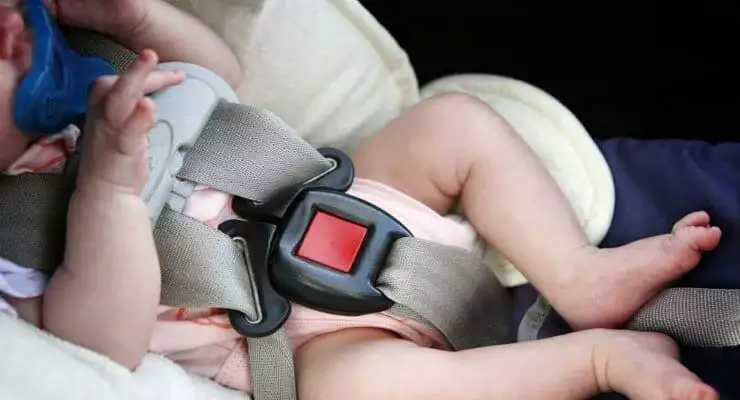The following is a guest post by Mitch Jawitz
Rear-facing? Forward-facing? Middle seat? Installed at the right angle? These are all questions parents ask when it comes to child car seat safety.
While we can’t keep accidents from happening, being better prepared can help prevent unnecessary injury to children. The following car seat safety tips can help you keep your kids safe on the road:
1. Children should be rear-facing until they reach the maximum height and/or weight listed for their given car seat model, usually about the age of two.
2. When using a rear-facing only seat, make sure your car seat base is installed at the correct angle. Babies must ride sitting semi-reclined so their airways remain open. Most infant car seats have built-in angle indicators or adjustors to assist in this process.
3. Any child who has outgrown the weight or height limit for his/her rear-facing car seat should use a forward-facing car seat until they reach either four-years-old, or until they are 40 pounds. A child has outgrown his or her forward-facing car seat when the top of his or her ears reach the top of the seat.
4. Always use a five-point harness, and properly position the harness on your child in accordance with the manufacturer’s specifications. For rear-facing seats, harness straps should enter the seat below the child’s shoulders. For forward-facing seats, they should be at or above the shoulder. And, the harness straps should lay flat, with no sagging or twisting. The harness must be snug so you cannot pinch a fold in the harness strap at the shoulder after buckling. Place the top of the chest clip at armpit level as chest clips placed too low can cause internal injuries, since this part of the body is not protected by the rib cage.
5. Installations should be tight. You should not be able to move your car seat side to side more than one inch. That said, you should use either the latch system or the seat belt but not both. The car seat should be able to move and flex a small amount to absorb some impact.
6. Car seat harness straps should not be washed. Submerging straps in even plain water can compromise the fire-retardant chemicals that are on them, and using detergents or other cleaning agents can weaken the integrity of the straps.
7. Children should not wear winter coats in harnessed car seats. The added bulk can prevent proper harness tightening. It can also compress during an accident, leaving too much room in the harness and allowing the child to shift dangerously.
8. The safest placement for children is in the center of the backseat. Children younger than 13 who ride in the front seat can risk serious injury – not only from other cars, but from the very airbags that are designed to protect passengers.
9. Be sure to register your child’s car safety seat. In the event of a recall, the manufacturer will reach you by mail to let you know of the recall and what steps you should take.
10. Proper installation of child car seats is critical to their function. I recommend having your seats inspected. For a list of inspection sites closest to you, please visit the National Highway Traffic Safety Administration.
In addition, car seats need to be replaced once they’ve been involved in an accident. Check with your local independent agent to see if your insurance carrier provides coverage for your car seat in the event of a covered accident.
Make sure to share these tips with friends and family members to help us keep our children safe. For more information on car seat safety, check out this informative infographic.
Mitch Jawitz is a safety advocate with more than 20 years experience in the insurance industry. Currently, he is the VP of Marketing, Personal Lines at The Hanover Insurance Group.





